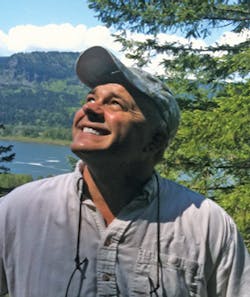Addressing water-quality goals sometimes invites innovative approaches. Among them is water-quality trading, which, by EPA definition, allows facilities facing higher pollution control costs to meet their regulatory obligations by purchasing environmentally equivalent (or superior) pollution reductions from another source at lower cost. One entity doing this is Clean Water Services, an Oregon public water utility providing wastewater treatment, stormwater services, and river restoration for the Tualatin River watershed. The organization’s advanced tertiary facilities provide among the highest level of wastewater treatment in the US. Its efforts have paid off: Studies show the Tualatin River is healthier now than it has been in the past three decades.
Leading the organization’s charge for water-quality trading is Bruce Roll, watershed management director. His department implements restoration efforts tied into its integrated watershed-based permit (including regulatory frameworks for MS4, NPDES for wastewater discharges, and TMDLs) that allows for water-quality trading executed through riparian and flow restoration to offset temperature requirements for wastewater discharges. Clean Water Services’ water-quality trading approach is a community-based trading system utilizing a network of community partners. In agriculture, the organization partners with the conservation district to place riparian plantings on farmland while simultaneously addressing irrigation efficiency, wetlands, and water-quality plans. In urban areas, Clean Water Services works with non-profits to implement riparian shading and with the community improvement program for large-scale restoration efforts.
The Tualatin River–with rainfall its only water source–meanders for 80 twisting miles along a flat river valley and is the only major natural water resource for Washington County. Clean Water Services serves more than 542,000 residents of urban Washington County and portions of four adjacent counties by maintaining 769 miles of sanitary sewer line and 525 miles of storm sewers. The organization cleans an average of 58 million gallons of wastewater and recycles 28.5 dry tons of biosolids daily through four treatment facilities. In addition to its wastewater services, Clean Water Services maintains more than 300 water-quality facilities. During a typical year, the water-quality laboratory collects more than 30,000 treatment plant, surface water, and industrial samples and performs more than 140,000 chemical, biological, and physical analyses.
What He Does Day to Day
Roll’s work entails creating connections–then opportunities–among some 20 different partners to implement the water-quality trading program. That means a lot of meetings and lunches in working with farmers, non-profits, cities, and other government agencies. Recently, Clean Water Services entered into a deal to create a new national wildlife refuge on farmland purchased by the US Fish and Wildlife Service. “We’re going to restore that asset,” says Roll.
What Led Him Into This Line of Work
Roll started working in a water-quality lab at age 16. His academic career led him to the doctoral level, where he obtained a Ph.D. from the University of Hawaii’s Water Resources Research Center. He also holds a master’s degree in public health administration. Halfway through his career, Roll learned that social readiness is important in doing large-scale restoration. He says his motivation came at a time when “the Safe Drinking Water Act and the Clean Water Act were exploding with amendments and revisions, stormwater regulations, and a lot of the Endangered Species Act work. I’ve always been fascinated dealing with these regulatory silos in an integrated, thoughtful way that doesn’t break the bank and maximizes the amount of ecological benefit.”
What He Likes Best About His Work
Roll says he derives his greatest satisfaction in observing how water-quality trading can enable a “truly meaningful” scale of restoration. “When we started this program 10 years ago, we had about 1,000 acres,” he says. “Now we’re in excess of 15,000 acres. We’re doing water-quality trading on a scale that will have a profound impact on the watershed’s health.”
His Greatest Challenge
Convincing others throughout the country that the model Clean Water Services has created is scalable and applicable to other areas in his greatest challenge, Roll says, pointing to the Gulf of Mexico hypoxia as a case in point. Still, he endeavors to promote the same approach to other US entities looking to do water-quality trading successfully.


